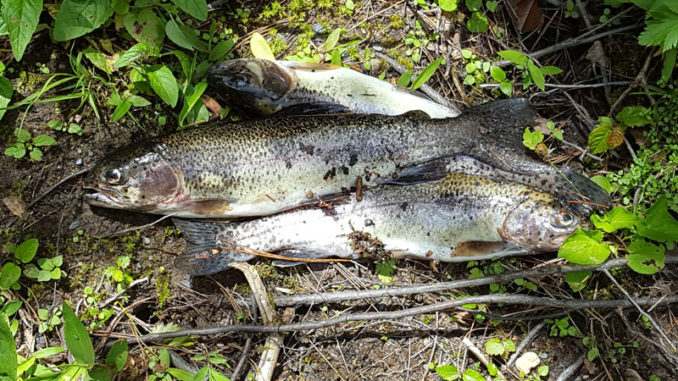
Be prepared with multiple trout flies
If an angler presents an artificial fly that looks like real food and drops it on the water as naturally as possible, a trout will grab it. The catch, however, is that the angler must react quickly before the trout spits out the concoction of feathers, fur, thread and metal once it realizes it isn’t real food.
Fishers have been fooling trout into taking artificial flies since the days of ancient Macedonia. And probably much earlier. They utilize different types, designed to imitate an insect, a phase of an insect’s life, or a type of aquatic life
Basic types of flies are dry, wet, nymph, streamer.
Keep it dry
Dry-fly fishing is the most exciting because it is more visual than other methods. You can see a trout rise to an insect, and you can see a trout rise to an artificial dry fly. Hook a rising trout on a dry fly, and if that doesn’t get your adrenalin pumping, take up golf.
A dry fly is constructed so that it settles delicately and naturally on the surface of a stream and floats into the view of a trout. Basic components are hackle, wing, body and tail. Hackle, made from the long, slender feathers of a gamecock, gives the fly its floating qualities. It is wound in a full circle around the hook just behind the eye. The stiffness of the hackle allows the fly to sit on the surface.
In addition to helping the fly float, hackle also simulates the wings, legs, and tail of an insect. Dubbing, usually made of animal fur and secured with thread, forms the body of the fly. Various other materials such as tinsel, floss and peacock herl are designed to give the fly a realistic appearance.
Common dry-fly patterns used in mountain streams are Adams (male and female), Blue-Winged Olive, Royal Wulff, Royal Coachman, Caddis, May Fly, Thunder Head, Quill Gordon, Hendrickson, Cahill, Midge, Gnat and Stone.
Get wet, get trout
A wet fly looks very much like a dry fly except that it doesn’t float on the surface. It imitates a drowned surface insect, an emerging nymph or an adult female that goes beneath the surface to lay its eggs. The basic components are about the same, only the fly is usually tied with soft hen hackle instead of stiff gamecock hackle to make it more absorbent. A wet fly imitates the emerging stage of an insect, and the fly is fished beneath the surface and given occasional tugs to simulate a swimming insect.
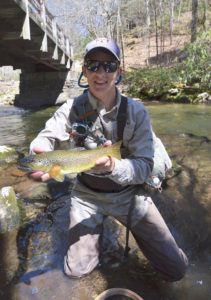
Common wet fly patterns are Black Spider, Coachman, March Brown, Gold-Ribbed Hare’s Ear and Zulu.
Neither wet flies nor dry flies must be exact imitations of an insect, merely a reasonable approximation. Looking up to the surface, a trout has a distorted view of a floating dry fly. A wet fly usually is fished in fast water, and a hungry trout doesn’t have time to scrutinize it.
Nymphing rocks
Nymphs, however, must be close duplications of the real thing because they represent the larval stage of an insect when the insect has very little swimming power. Nymphs tumble along the bottom or lie on it. Since there is little distortion beneath the surface, a trout has plenty of time to examine the fly. If the fly doesn’t look like the real thing, the trout will go elsewhere to eat. In still water, nymphs make up about 90% of a trout’s diet, and nymphs are available food year-round.
Nymphs are cast upstream above feeding trout and allowed to tumble naturally down to them. Nymph-fishing requires time and patience to master because you must to learn to detect a strike, which, sometimes, can be as subtle as a slight pause in the drift of the leader.
Common nymph patterns are: Stick Bait, Hare’s Ear, Tellico, Pink Lady, Secret Weapon, Pheasant Tail, Prince and Zug Bug.
Streaming live
Streamers are the flies fishers use when they want to catch big browns and rainbows. Streamers imitate swimming aquatic life such as minnows, dace and sculpin. They are usually stripped through the water to simulate the darting, swimming patterns of small fish. Streamers come in large patterns, anywhere from a No. 10 to a No. 4.
Common streamers are Muddler Minnow, Woolly Bugger, Black Nose Dace, Shiner and sculpin patterns.
Veteran fly fishers carry an assortment of flies in various sizes. If one type of fly or size doesn’t work, try another pattern in a smaller or larger size. If you’re persistent, you’ll eventually discover the right combination.
________________
Click here to read about North Carolina’s most sought after fish — mountain trout.

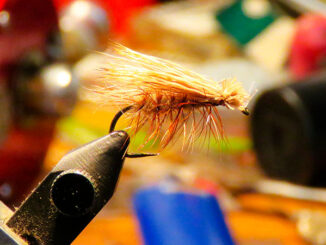
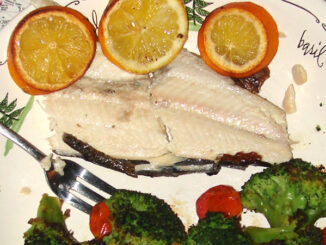
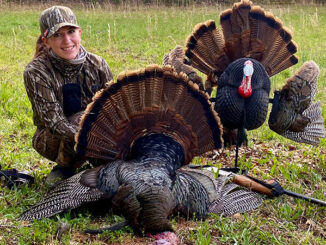

Be the first to comment